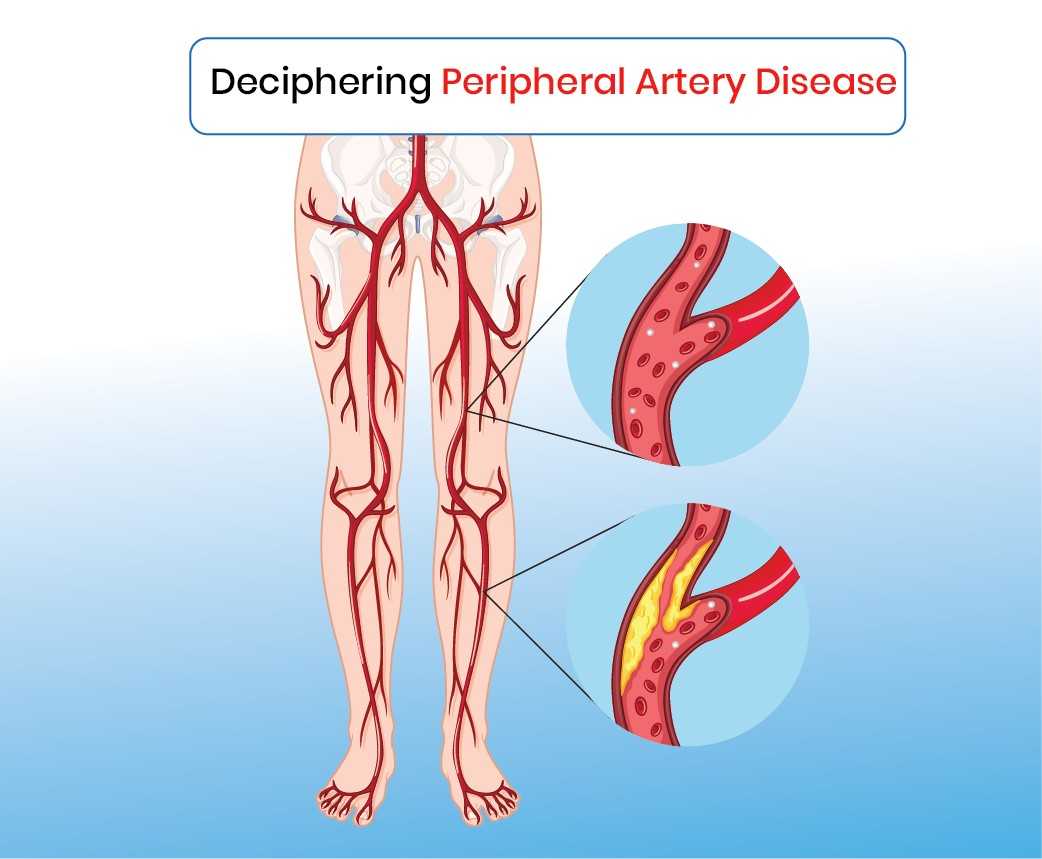Peripheral Artery Disease (PAD) is a vascular condition that affects millions of people worldwide, yet it often remains underdiagnosed and misunderstood. This blog aims to shed light on PAD by exploring its symptoms, causes, and available treatment options.
Understanding Peripheral Artery Disease (PAD):
PAD occurs when plaque buildup narrows the arteries, reducing blood flow to the limbs, most commonly the legs. This buildup, known as atherosclerosis, restricts the supply of oxygen and nutrients to the muscles and tissues, leading to symptoms such as leg pain, numbness, and non-healing wounds or ulcers. PAD is a progressive condition that, if left untreated, can increase the risk of complications such as heart attack, stroke, and limb amputation.
Symptoms of PAD:
The hallmark symptom of PAD is intermittent claudication, characterized by leg pain or discomfort that occurs during physical activity and improves with rest. Other symptoms may include:
Numbness or weakness in the legs.
Coldness or discoloration of the legs or feet.
Poor wound healing, particularly in the lower extremities.
Erectile dysfunction in men, which may indicate underlying vascular issues.
Causes and Risk Factors:
The primary cause of PAD is atherosclerosis, a process in which cholesterol, fat, and other substances accumulate in the arterial walls, forming plaque. Several factors contribute to the development of PAD, including:
Smoking: Tobacco use is one of the most significant risk factors for PAD, as it damages the lining of the arteries and accelerates plaque buildup.
Diabetes: Individuals with diabetes are at increased risk of developing PAD due to elevated blood sugar levels that can damage blood vessels and nerves.
High Blood Pressure: Hypertension puts added strain on the arterial walls, increasing the likelihood of plaque formation and narrowing of the arteries.
High Cholesterol: Elevated levels of LDL (“bad”) cholesterol can contribute to the buildup of plaque in the arteries, reducing blood flow.
Age and Genetics: PAD becomes more common with age, and individuals with a family history of vascular disease are at higher risk.
Treatment Options for PAD:
Early detection and intervention are crucial in managing PAD and preventing complications. Treatment strategies for PAD aim to alleviate symptoms, improve quality of life, and reduce the risk of cardiovascular events. These may include:
Lifestyle Modifications: Quitting smoking, adopting a healthy diet low in saturated fats and cholesterol, engaging in regular exercise, and maintaining a healthy weight can help improve PAD symptoms and slow disease progression.
Medications: Medications such as antiplatelet agents (e.g., aspirin), statins to lower cholesterol, and medications to control blood pressure and blood sugar levels may be prescribed to reduce the risk of complications.
Interventional Procedures: In cases where lifestyle changes and medications are not sufficient, minimally invasive procedures such as angioplasty, stenting, or atherectomy may be performed to restore blood flow to the affected arteries.
Surgery: In severe cases of PAD, bypass surgery may be necessary to reroute blood flow around blocked or narrowed arteries, improving circulation to the legs and feet.
By recognizing the symptoms of PAD, understanding the underlying causes, and exploring the available treatment options, individuals can take proactive steps to manage PAD and improve their vascular health. Early intervention, lifestyle modifications, and adherence to medical treatment are essential in reducing the risk of complications and optimizing outcomes for individuals living with PAD. If you experience symptoms suggestive of PAD, such as leg pain or poor wound healing, consult a healthcare professional for evaluation and personalized management.

